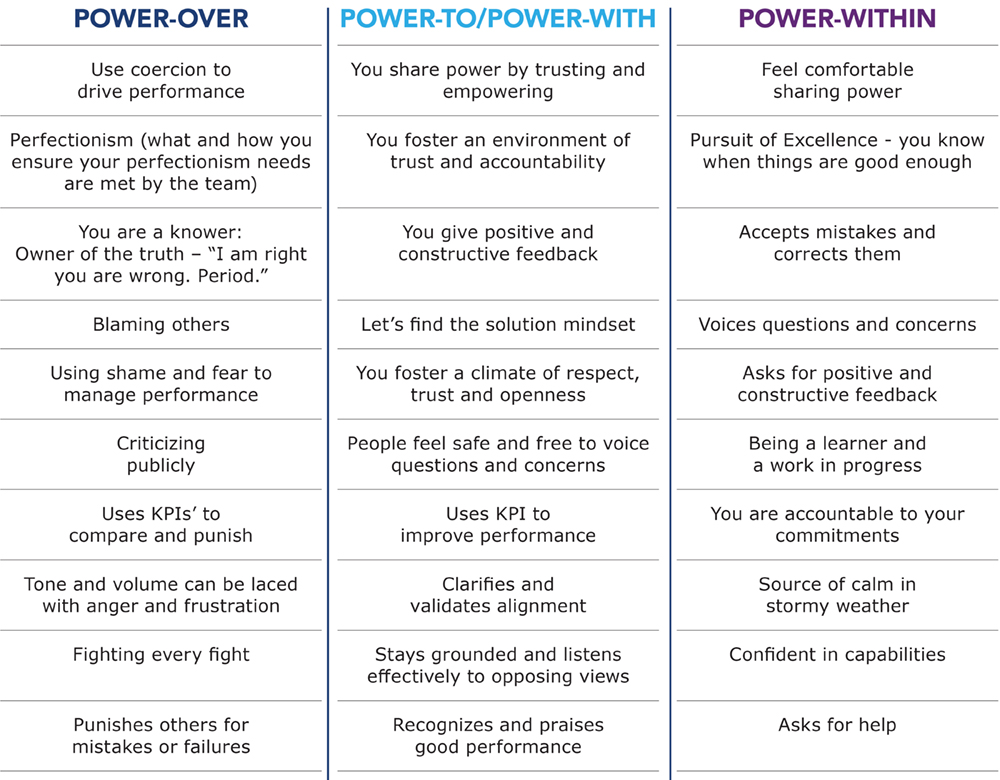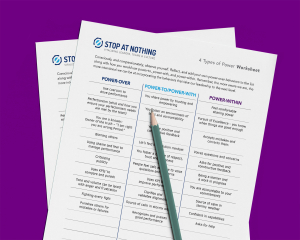By Cecilia Calderon – March 2021
Would you describe yourself as a powerful leader? Many surveys show that most leaders believe they have significant power in their organizations. In this month’s blog post, explore the four main types of power to determine which is best for you to drive progress, innovation, and success.

Leading effectively through this pandemic has not been an easy task, and we still can’t be sure how leadership will be changed after the era of COVID-19. However, we can take this opportunity to reflect on ourselves and our leadership style to prepare for the future.
There are countless books, articles, and podcasts available about leadership. These references and guides tell you about leadership effectiveness – what it looks like, what it isn’t, and they tell you how to get better at it.
Many of these tools are highly effective, and we teach them to our clients ourselves. However, one undeniable fact that we know to be true is that leadership in theory and leadership in action are two very different things. Knowing is an intellectual exercise, important but not even half of the equation. The act of leading is where the rubber meets the road.
Knowledge about leadership is not enough. The key is looking candidly into our behaviors as we lead. Brené Brown puts it best in her book “Dare To Lead™” when she says, “Who we are is how we lead.” So let’s ask ourselves, “who are we, and how are we leading?”
We can’t talk about leadership without talking about power. Effectively leading ourselves, our teams, and our organizations means that we are conscious and intentional of how we use our power. Of course, we have the hierarchical power given to us by the organization, but we also have our own personal power. This is our unique way of showing up, and this changes everything about our leadership effectiveness.
I want to share some deep, powerful distinctions in how we wield power. These techniques have been very helpful to me in my practice, and they can make a world of difference in yours.
First and foremost, power is not fundamentally good or bad. What defines power is how we use it. Do we wield power in a way that builds confidence in others and drives results along with engagement? Or do we wield power in a way that damages psychological safety and drives results through fear? Both can be superficially successful, but one is much more powerful than the other.
Let’s explore power in leadership dynamics.
There are 4 types of power*
- Power-Over is power built on force, coercion, domination, and control. It motivates largely through fear which helps protect and hoard the leader’s power. In business, it can translate to heavy-handed and punitive managers. Power-over elicits the instinct to resist and rebel, whether passively or actively. It creates walls.
- Power-With is shared power that grows out of collaboration. It is built on respect, mutual support, influence, and empowerment. Power-with can help build bridges within teams. It leads to collective action and teamwork.
- Power-Within is the ability to recognize the differences in others and the self-confidence to challenge assumptions along with long-held beliefs. Power-within is the belief that you can make a difference. It is having the personal power to recognize and have a sense of your own capability.
- Power-To allows team members to maintain their own agency and acknowledges their unique potential to make a difference.
“For every action there is an equal or greater reaction”.
I have found through my team and individual coaching practice the best way to learn, and sometimes unlearn (yes there is a lot of unlearning in our journey to grow as leaders), is by connecting theory with our own everyday behaviors.
Here is a list of some commonly observed power-over behaviors with alternative power-to, power-with, and power-within behaviors. Do any of these ring true to your own experience?

By looking at the list you can see that the aim here is not to maximize our own power over others, but rather to create the conditions where power can be shared. An effective leader is defined by their ability to create the conditions where every individual’s opportunity to exercise power (with/to/within) is maximized in the context of their team, their task, and their performance.
If you notice yourself utilizing power-over behaviors, ask yourself honestly – Is this behavior in service of the team, the process, the project, the organization, or is it in service of my ego? The answer can be quite profound and transformational.
The list above is by no means exhaustive. I invite you to consciously, and compassionately, observe yourself. Reflect, and add your own power-over behaviors to the list along with how you would use power-to, power-with, and power-within.
Remember, the more aware we are, the more intentional we can be at incorporating the behaviors that take our leadership to the next level.
“When we know better, we do better” -Maya Angelou
*The terms power with, power to, and power within are attributable to Just Associates.
Just Associates, Making Change Happen: Power; Concepts for Revisioning Power for Justice, Equality and Peace. Just Associates, 2006.

